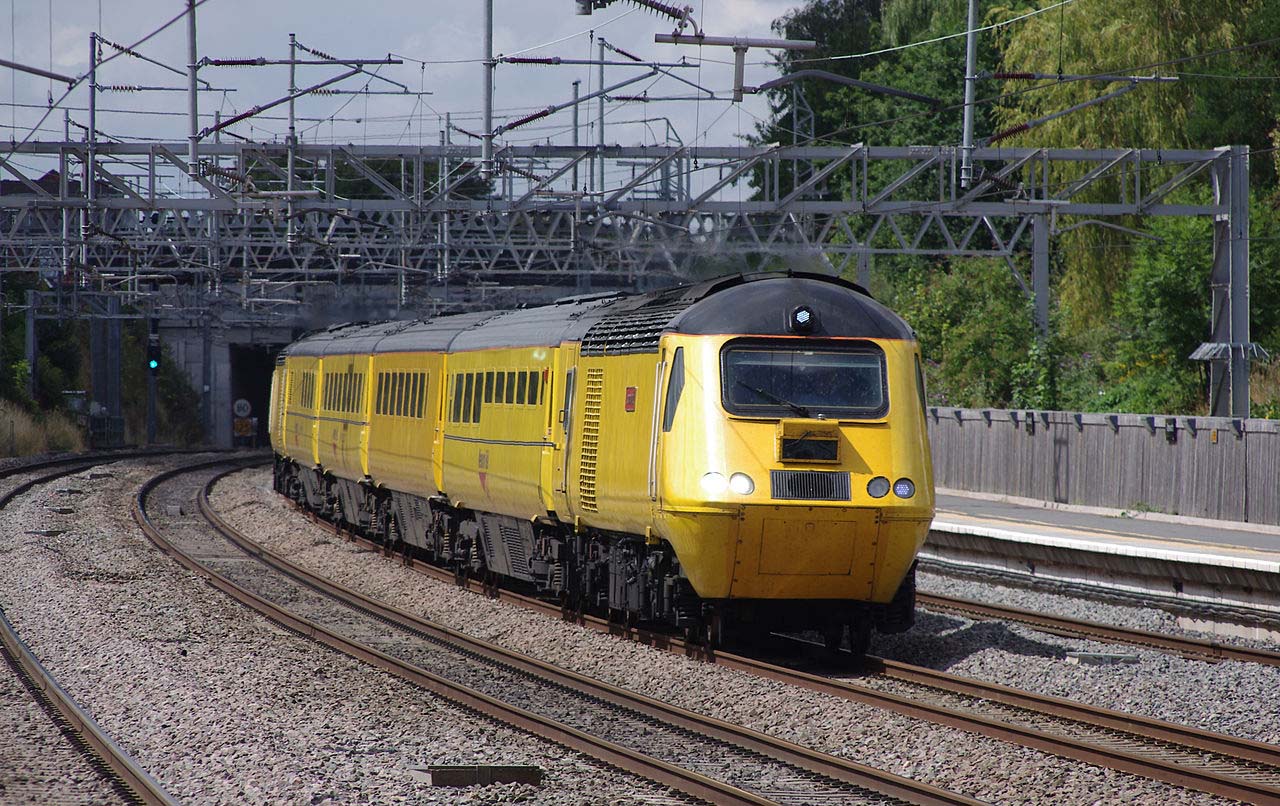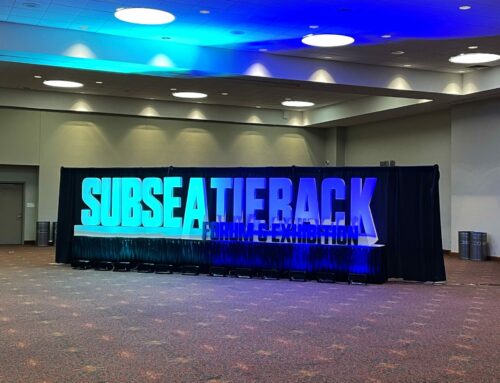Rail Innovation Timeline – 1900s
March 23, 2022
Viper Innovations’ CableGuardian system is one of the latest in a long line of achievements in railway technology targeted at improving the safety of the railway for the public and workforce and increasing the efficient operation of the railway-at-large. To celebrate these past innovations and all things to do with the improvement of safety and efficiency, we researched some key points in time that moved the railway forward. This piece covers those during the 1900s, from Hermann Lemp’s Diesel-Electric Traction in 1914 to the Train Protection and Warning System (TPWS) in 1997. Click to read our earlier rail timeline article which focuses on the 1800s; outlining notable innovations during this periods.
The 20th century gave birth to new types of traction, significant increases in safety and efficiency in train operations and maintenance, new materials and methods and the introduction of greater centralisation in command and control. The incremental use of first electrical and then electronic means of controlling trains enabled faster and more dense services, serving more people and moving more goods, which was essential during the war years. The development of high-speed rail, firstly in Japan with the Shinkansen, or Bullet Train, required innovation in maintenance practices to ensure it would keep up with service requirements whilst the increase in road traffic across the century gave renewed focus on the road/rail interface with level crossing technology. The continued push for the highest possible safety combined with efficient operations required to compete with road traffic provided significant developments in operational safety, which provided the springboard for the developments that would be used to join Europe’s rail network in the next century.
1914 – Diesel-Electric Traction – Hermann Lemp
General Electric electrical engineering developed and patented a reliable direct current electrical control system combined with a diesel-powered generator to drive a DC machine. Lemp’s design used a single lever to control both engine and generator in a coordinated fashion and was the prototype for all diesel–electric locomotive control systems. The first applications were for shunting engines.
1925 – Track Geometry Train – Emile Hallade
Track geometry cars started to emerge in the 1920s when rail traffic became sufficiently dense that manual and visual inspections were no longer practical, the driver for many other automated monitoring systems. The increasing speeds of trains of that era required more meticulously maintained tracks. In 1925, the Chemins de fer de l’Est put a unit into operation carrying an accelerograph developed by Emile Hallade, the inventor of the Hallade method of setting out track curves. The accelerograph could record horizontal and vertical movement as well as roll. It was fitted with a manual button to record milestones and stations in the record
1937 – Route relay interlocking and NX Route Setting – General Railway Signal Company
The transition from a fully mechanical interlocking, through electro-mechanical to fully electrical interlocking took place in the US around 1929 and was installed at Lincoln, Nebraska on the Chicago, Burlington, and Quincy Railroad. This development paved the way for a greater level of control and automation of larger sections of track that created Centralised Traffic Control systems, the first of which was the Entrance-Exit (NX) Signalling System, first deployed at Brunswick on the Merseyrail network in Liverpool in 1937. The NX system uses a mimic of the railway and breaks the railway into controlled signals and auto-sections, with a controlled signal at a junction or other critical piece of infrastructure. The signaller presses a button to ‘call’ the route at the desired entrance signal and presses the corresponding exit signal required. The relay logic then sets the points and track circuits detect the position of trains. When the logic proves that the route is set, locked, and detected, and the route ahead clear, a proceed aspect will be shown to the driver of the train to provide movement authority. These systems are located in larger Power Signal Boxes, with a much larger concentration of the railway controlled from a centralised point, greatly increasing the efficiency of the signalling control and allowing greater throughput of trains.
1952 – Manually Controlled Barrier Level Crossing
As traffic became faster on the railway and road traffic more dense, improved means of protection of the intersection between road and rail was required. An MCB crossing is controlled by an adjacent signal box where the signaller can see the road closure and determine that the crossing is not obstructed before signalling the train to proceed. Normally an MCB crossing either has two full road width barriers or four half road width barriers that fully close the road. This type of crossing is also often provided with standard road-lights and alarms that operate when closing. The first crossing of this type was tested at Warthill, North Yorkshire in 1952.
1959 – Continuous Welded Rail (CWR)
Although in use in various other administrations, the British Railway adopted continuous welded rail track as a standard in 1959 following lengthy technical investigations. The adopted track form was designed for the national temperature range and the humid and generally corrosive atmosphere found in the UK. Apart from the more comfortable ride for passengers, the advantages of using CWR included economic ones, such as an extension of rail life by between 30 per cent and 40 per cent, savings in the cost of track maintenance, extended sleeper life, and reduction in fuel costs and wear and tear on rolling stock. Additionally, the important gain in safety resulting from the elimination of rail joints. CWR needs to be ‘stressed’ when installed, which means to draw it to a tension that mimics 27 degrees Celsius, and lengths of track welded using flash-butt or aluminothermic welding
1961 – Automatic Half-Barrier (AHB LX)
As a means of providing a cost-effective solution to managing the road/rail interface the Automatic Half Barrier crossings were developed. These are initiated by approaching trains and are not interlocked with signals, although they are monitored by a signaller to ensure safe operation. The maximum train speed over these crossings is 100 MPH and only a maximum of two tracks can be crossed. The crossings have two half-barriers that only close the entrance lanes to the crossing, standard crossing road-lights and audible alarms. At the maximum rail line speed, the crossing warning time is typically about 27sec from the Amber light first showing to the train arriving at the crossing. These crossing were originally designed for use on roads with infrequent traffic. The first crossing of this type in the UK was installed in the town of Spath, near Uttoxeter in Staffordshire, and began operating on 5 February 1961.
1962 – Doctor Yellow
Doctor Yellow is the nickname for the high-speed test trains that are used on the Japanese Shinkansen (“Bullet Train”) routes. The trains have special equipment on board to monitor the condition of the track and overhead wire, including special instrumented bogies. It was recognised that to run a dense high-speed timetable, track inspection needed to be both robustly safe and fast; thus, line inspection is carried out at full line speed of approximately 170mph!
1970 – MCB CCTV
An MCB crossing represented a great improvement in safety and efficiency from the previous level crossings, but the need to have a manned signal box adjacent to a crossing could be very costly. To improve this and in keeping with the continuous move to centralise operations, it was decided that innovation was required to allow one signaller to monitor and control multiple crossings. A MCB-CCTV is the same as an MCB crossing, except it is controlled remotely from a controlling signal box. CCTV cameras mounted in proximity to the crossing enable the signaller to monitor the road closure and to determine the crossing is clear, before signalling the train on. The first crossing of this type was trialled at Funtham’s Lane, near Peterborough, Cambridgeshire in 1970.
1973 – Mentor: Overhead Line Measurement
The first Mobile Electrical Network Testing, Observation and Recording train, MENTOR, came into operation in 1973 to support a programme of Electrification and would be used to observe and report on the height, stagger, and contact of the overhead line pantograph. Originally fitted with windows to observe the dynamic interaction with the overhead line, it has latterly been fitted with video and laser devices. It is now displaced from front line service by a new Mk3 vehicle in the New Measurement Train, where higher levels of technology have been implemented.
1985 – Solid State Interlocking (SSI)
Solid State Interlocking (SSI) is the brand name of the first-generation processor-based interlocking developed in the 1980s by British Rail’s Research Division, GEC-General Signal and Westinghouse Signals Ltd in the UK. Its first implementation was in 1985 at Leamington Spa and then saw installation in South Africa. The basis of the innovation was to take the relay-bases systems that had latterly replaced mechanical interlockings and turn them into micro-processor-based technology. Geographic interlocking data was flashed onto an EPROM using a triple-voting processor system, where processed events would have to achieve the same outcome on all processors. In the event one of the processors did not agree with the other two in the system, it would be taken out of service, thus providing a high level of integrity and availability. The footprint of SSI was tiny in comparison to RRI, thus improvements in cost and footprint could be gained from its use as well as speed improvements in route setting. At the field end of operation, the system used fixed IO modules to control driven equipment and Long-Distance Terminals to transmit codes to drive equipment long distances. SSI was the forerunner of the modern computer-based interlockings in use today.
1986 – Structure Gauging Train
Gauging is a key task for both renewals and maintenance. One of the roles of the track engineer is to ensure that all structures on the railway are distanced appropriate to the outer limits of a train, both static and in movement, its ‘load gauge’ and ‘swept envelope’. This requires structures and other rail paraphernalia to be measured to ensure it lies outside of the possible path of impact for a passing rail vehicle. The structure Gauging Train was developed to measure the following rail elements using laser measurement systems:
- Bridge and tunnel profiles, and any movement of these between recording runs which may indicate structural deterioration
- Platform heights and offsets
- Lineside vegetation management
- Rail vehicle gauge clearance”
1988 – Automatic Train Protection (ATP)
As a means of preventing accidents caused by trains passing Signals at danger (SPaD) and with a recent increase in the problem, the UK developed their ATP system. The system was developed between 1988 and 1992 as a means of continually monitoring the speed of a train and intervening if the train was travelling too fast to stop at a signal at danger (red) and was created from the modification of two similar systems operating on the continent. The system was deployed on the Great Western Railway but was deemed too expensive to roll out everywhere, leading to the development and implementation of TPWS. The system consists of radio beacons installed at intervals in the track and a driver control system that prevents over-speeding on the approach to signals. The on-board computer takes information from the beacons and calculates the maximum speed of the train. When the maximum permitted speed decreases, such as when approaching a signal at red, three braking curves are calculated: the indication curve, which is the ideal deceleration to the new limit; the warning curve, 3 mph above the indication curve, which creates a warning to the driver; and the intervention curve, 6 mph above the indication curve. At this point, the train will apply the brakes automatically. This system is very similar to the modern ETCS control system in terms of operating principle.
1989 – Integrated Electronic Control Centre (IECC)
The Integrated Electronic Control Centre (IECC) was developed in the late 1980s by BR R&D and is the most populous of control systems in the UK. Variants are installed around the world. IECC consists of a number of operator’s workstations with VDU displays that show the control area and is semi-automatic using Automatic Route Setting (ARS), which allows the signaller to control a larger area by automating some of the route setting that the signaller would do in the normal timetable. IECCs were intended to replace the NX type control systems in use and would allow fewer signallers to control greater areas of the railway more effectively. They control Solid State Interlockings but existing relay interlockings may also be controlled from this system.
1997 – Train Protection and Warning System (TPWS)
TPWS was developed as a development on the UK Automatic Warning System (AWS) a system that would stop the train in the event of a signal passed at danger. The system was developed after a decision that the nationwide installation of a fully automatic train protection system was not practical. Trial installations of track side and train mounted equipment were made in 1997, with trials and development continuing over the next two years. The purpose of TPWS is to stop a train by automatically initiating the brake if the train has approached a signal at red too fast, passed a signal at red, approached buffer stops in a platform too quickly or approached a change in track speed too quickly. TPWS was an example of following the ALARP (as low as reasonably practicable) principle of safety design, as it does not stop the train from passing a signal at danger but does mitigate the effects of it happening. The cost of the system in comparison to the ATP system and the improvements it brings show the ALARP thinking in practice.
We hope you’ve enjoyed reviewing our collation of interesting rail innovations. Although we have focussed on innovations that appealed to us as innovators in safety and efficiency, there are countless others that could have qualified. It’s important to recognise that missing from the innovations listed is the people who made it happen as part of the wider team. An individual may have a spark of brilliance to light the way, but it takes teams of people to turn an idea into an innovation. In the modern, safety critical and densely populated rail networks of today, bringing an invention to life, enabling its progress, assuring its safety, refining its operation, and keeping it in use throughout its lifecycle is a tremendously difficult task. Viper has always recognised the vital part played by our clients’ engineers, specifiers, enablers, assurance, users, sponsors, and look forward to many more fruitful collaborations in the years ahead.





